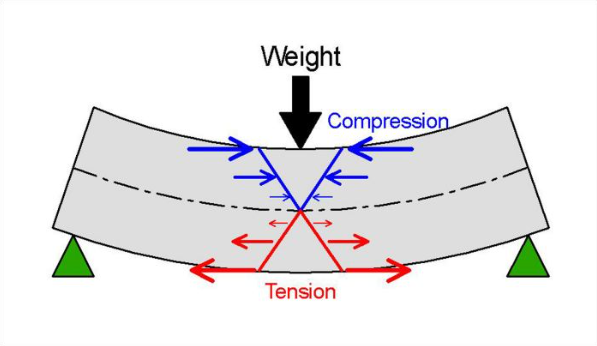In this blog post, we’ll discuss the features and benefits of reinforced concrete, which combines two materials to create a new material effect.
There are many different materials used in the construction of buildings. Reinforced concrete is one of the most common and used materials. Reinforced concrete is a material made by embedding steel bars in concrete. This distinguishes it from ordinary concrete, which is just pure concrete, and rebar, which is just steel. Reinforced concrete is a material that combines both materials to create a new material.
The idea of using rebar and concrete to create a new material called reinforced concrete seems simple at first glance. It’s just a matter of placing rebar inside the concrete and letting it harden together before it sets. But there’s a scientific reason why these two materials can be used together. It’s the coefficient of thermal expansion. The coefficient of thermal expansion is the eigenvalue of a material’s change in volume with temperature. Rebar and concrete have roughly the same coefficient of thermal expansion, which means that their volume changes at the same rate as the temperature changes, so it’s safe to use them together. If the coefficients of thermal expansion were different, the two materials would change their volume differently, and reinforced concrete would not be able to be used in construction.
There are advantages to using reinforced concrete compared to using just plain concrete or just rebar. This is due to the properties of each material: rebar and concrete. There are many different types of forces that building materials are subjected to, but compressive and tensile forces are the main ones.

(Source – https://www.concretedecor.net/departments/concrete-countertops/success-with-concrete-countertops-how-should-you-reinforce-your-countertop/)
The figure above shows the compressive and tensile forces of a material. In general, when a building is loaded as shown above, the material bends downward, so the compressive force is applied to the top of the material and the tensile force is applied to the bottom. Each material has a different ability to resist compressive and tensile forces. Concrete is good at resisting compression, but weak at resisting tension. Therefore, in the case of concrete, failure usually occurs at the bottom, where the tensile force is applied, as shown in the figure above. Reinforced concrete, on the other hand, resists both compression and tension. In other words, it is a material called reinforced concrete that makes the rebar resist tension by placing the rebar near the area where the tension force is applied to the concrete, as shown in the image above. Therefore, the rebar is basically placed at the bottom of the concrete in the image above, where the tension force is applied. This makes reinforced concrete more resistant to tensile forces compared to regular concrete, which is an advantage in creating safer buildings.
We’ve seen above that reinforced concrete is a better material compared to regular concrete. However, the jury is still out on whether it’s a better material compared to rebar. Based on the facts above, you might think that since rebar is strong in both compression and tension, there’s no need to use reinforced concrete. However, we still use reinforced concrete rather than rebar alone. There are many reasons for this, but the main one is the corrosion protection of rebar. Rebar is steel, so when it’s exposed to the air, corrosion occurs, and corrosion weakens the strength of the rebar. In the case of reinforced concrete, the rebar is inside the concrete, so it’s not exposed to the air, and therefore the concrete has the effect of preventing the rebar from corroding. In other words, using reinforced concrete still has a greater effect on the stability of the building than using rebar alone.
Above, we’ve seen the advantages of reinforced concrete compared to regular concrete and rebar. Because of these characteristics, rebar and concrete are more often used together as a material called reinforced concrete, rather than alone.
 I’m a blog writer. I want to write articles that touch people’s hearts. I love Coca-Cola, coffee, reading and traveling. I hope you find happiness through my writing.
I’m a blog writer. I want to write articles that touch people’s hearts. I love Coca-Cola, coffee, reading and traveling. I hope you find happiness through my writing.